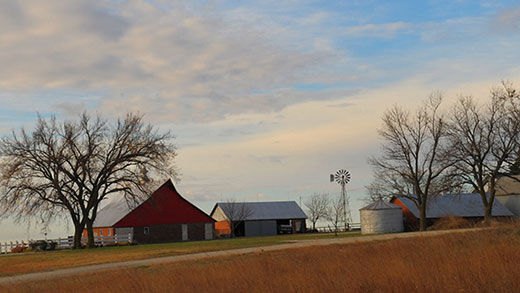Farmers in ‘strong financial position’ for 2022, says executive director
A combination of farmers buying inputs at lower prices in late 2020 and capitalizing on strong crop yields and robust grain prices in mid-2021 has led to the highest net farm income ever recorded in Kansas, according to data from the Kansas Farm Management Association.
KFMA executive director Kevin Herbel said the statewide average net farm income in 2021 was $310,230, a 78% increase over the average of $173,972 in 2020. The new figures represent the sixth straight year that Kansas net farm income has grown since 2015, when income plunged to its lowest average in 30 years, $6,744.
The report summary is now available online.
“The income earned in 2021 put our farms, on average, in a very strong financial position coming into 2022,” Herbel said. “Even with the high levels of risk and concern we have (in 2022), we began the year in a very strong financial spot.”
The numbers reflect average net farm income for 853 Kansas farms working with KFMA economists in six regions of the state. KFMA economists work individually with farm families to provide farm-specific production and financial management information that can be used in making decisions.
KFMA was formed in 1931.
Herbel and KFMA economists across the state have termed 2021 a “perfect storm” for Kansas farmers, noting that many of them purchased farm inputs—fertilizer, seed, feed and more—in late 2020, prior to a drastic bump in input prices leading into 2021.
Then, he said, the 2021 production year was a good one for many crop producers, a time when yields were high and prices for many commodities were sturdy.
“Those factors,” Herbel said, “worked together to produce very strong income for the year.”
Livestock operations, which faced increased feed costs due to higher prices for grains and other feed source, faced financial pressure across Kansas. However, according to Herbel, the total value of livestock produced by the average KFMA farm increased 12% to $131,247—its highest level since 2014 —helping to recover some of the increased costs.
Every region of Kansas experienced large increases in net farm income, according to the KFMA report. By region:
Northwest Kansas—$399,378, up from $145,390 in 2020.
Southwest Kansas—$465,123, up from $236,591 in 2020.
North central Kansas—$271,362, up from $173,013 in 2020.
South central Kansas—$265,191, up from $188,231 in 2020.
Northeast Kansas—$304,045, up from $147,381 in 2020.
Southeast Kansas—$306,825, up from $196,571 in 2020.
KFMA’s report also indicated that for 2021:
• Government payments had a smaller impact in 2021 than recent years, totaling 21% of net farm income. Without government payments, Kansas’ net farm income would have been $242,512 per farm—up from the past three years when government payments were a larger portion of net income received.
• Crop insurance net income was negative for 2021, which means the amount farmers received for crop losses was, on average, less than they paid for insurance premiums.
• Total debt per farm increased $50,621, continuing a trend of increased debt for nearly every year since 1990 (there were slight decreases in 2011 and 2020). However, the net worth for the average KFMA farm increased by $261,000 from the beginning to end of 2021.
• The top 25% of KFMA farms generated a net farm income of $805,162, while the bottom 25% earned $15,104—the first time the bottom 25% had a positive net return since 1979.
Herbel cautioned that KFMA’s annual report paints a picture of Kansas agriculture, but each farmer needs to make decisions based on their own farm’s records on such factors as management strategies, production costs and market factors.
“Investing time into this process is important to successfully manage the uncertainty and volatility of today’s production and economic environment,” he said.
Herbel and economists from six KFMA regions recently gave an overview of net farm income during an interview on the weekday radio program, Agriculture Today, which is available online.
More detail is also available online in the 2021 KFMA Executive Summary.


